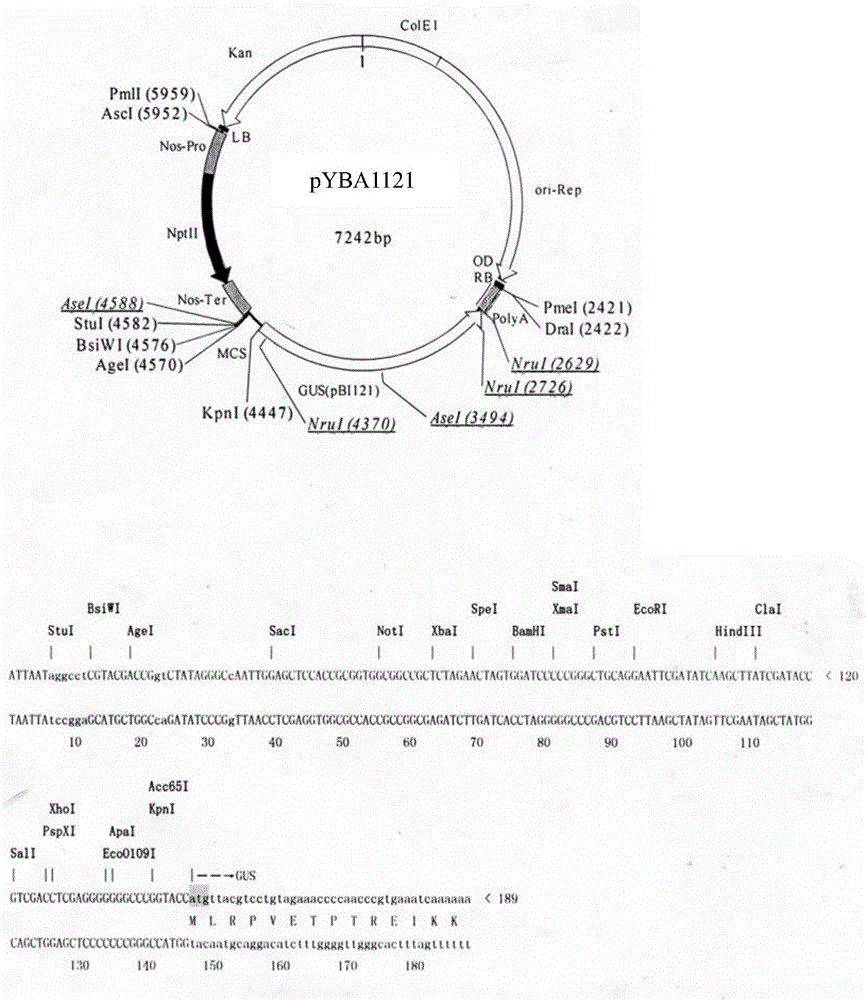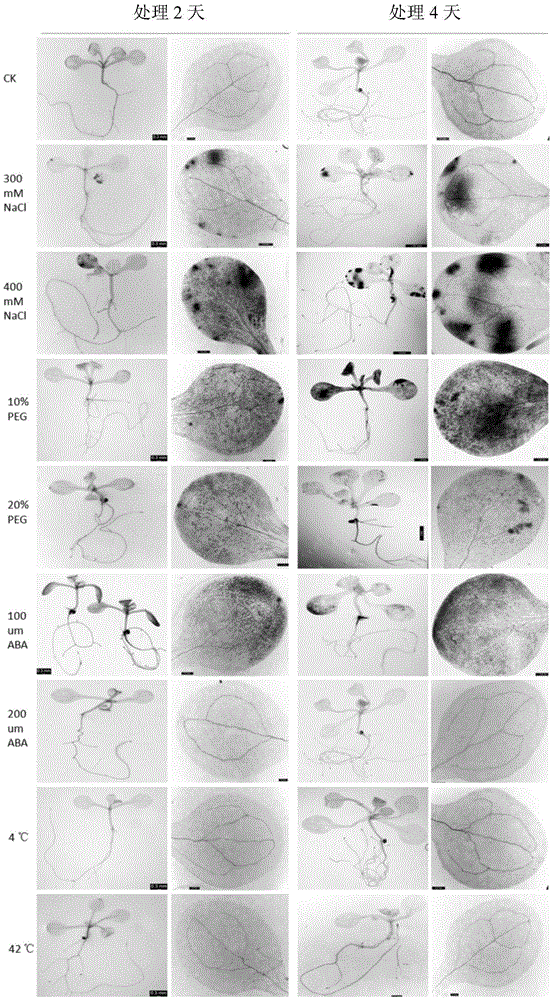Plant induction type promoter and application of plant induction type promoter
A promoter and inducible technology, applied in the field of plant molecular biology, can solve the problems of not being able to meet the requirements of transgenic breeding and less research, and achieve the effect of broad application space and market prospects
- Summary
- Abstract
- Description
- Claims
- Application Information
AI Technical Summary
Problems solved by technology
Method used
Image
Examples
Embodiment 1
[0051] Embodiment 1, the acquisition of HbHAK2 promoter
[0052] 1. Cultivation of wild barley
[0053] Salt pasture - wild barley (Hordeumbrevisubulatum (Trin.) Link), collected from the saline grassland of Inner Mongolia. At room temperature, wild barley seeds were soaked in deionized water for 12 hours, and then placed in a refrigerator at 4°C overnight. Rinse three times with sterilized deionized water, put them in a culture dish with wet gauze, and germinate at 25°C. After 4-5 days after most of it germinates, transfer to a sterilized glass bottle filled with 1 / 2 Hoagland culture solution (wrapped with opaque paper), at a temperature of 22-23°C and a light intensity of 1000- 3000μmolm -2 the s -1 , grow under the conditions of light 12h / day and darkness 12h / day, and take materials for later use when they grow to two leaves and one heart.
[0054] 2. Cloning of HbHAK2 promoter
[0055] Genomic DNA of wild barley was extracted by the CTAB method, and PCR amplification...
Embodiment 2
[0060] Embodiment 2, the acquisition of transgenic strains of Arabidopsis thaliana
[0061] 1. Construction of proHbHAK2:GUS fusion expression vector
[0062] The PCR amplified product obtained in Example 1 and the vector pYBA1121 were double-digested with SacI and HindIII, respectively, and the digested fragment containing the HbHAK2 promoter and the backbone fragment of the vector pYBA1121 were respectively recovered, and the two were ligated to obtain a recombinant expression vector. It was confirmed by enzyme digestion and sequencing that the recombinant expression vector was pYBA1121( figure 1 The DNA fragment between the SacI and HindIII sites of ) was replaced by the DNA fragment shown in SEQIDNo.1 in the sequence table (ie, the promoter HbHAK2), and the recombinant expression vector was named proHbHAK2:GUS. The T-DNA region of the recombinant expression vector proHbHAK2:GUS contains the expression cassette proHbHAK2+GUS+polyA.
[0063] 2. Obtaining of transgenic Arab...
Embodiment 3
[0072] Example 3, Functional verification of the HbHAK2 promoter in transgenic Arabidopsis
[0073] 1. Treatment and cultivation of transgenic Arabidopsis plants
[0074] The seeds of transgenic proHbHAK2:GUS Arabidopsis strains were treated with 10% sodium hypochlorite, rinsed with sterile water for 3-5 times, deposited on 4°C for 2 days, and then sowed on MS plates, cultured at 25°C for 10 days, and germinated Consistent seedlings were subjected to no treatment, ABA treatment and adversity stress treatment. The ABA treatment was treated with ABA solution containing 100 μM and 200 μM for 2 and 4 days respectively; the adversity stress treatment was specifically treated with 300 mM and 400 mM NaCl solution and 10% and 20% PEG for 2 and 4 days respectively, and the seedlings were placed Treated at low temperature (4°C) and high temperature (42°C) for 2 and 4 days, respectively.
[0075] 2. Analysis of HbHAK2 promoter activity
[0076] The above-mentioned untreated, ABA-treat...
PUM
 Login to View More
Login to View More Abstract
Description
Claims
Application Information
 Login to View More
Login to View More - R&D
- Intellectual Property
- Life Sciences
- Materials
- Tech Scout
- Unparalleled Data Quality
- Higher Quality Content
- 60% Fewer Hallucinations
Browse by: Latest US Patents, China's latest patents, Technical Efficacy Thesaurus, Application Domain, Technology Topic, Popular Technical Reports.
© 2025 PatSnap. All rights reserved.Legal|Privacy policy|Modern Slavery Act Transparency Statement|Sitemap|About US| Contact US: help@patsnap.com



